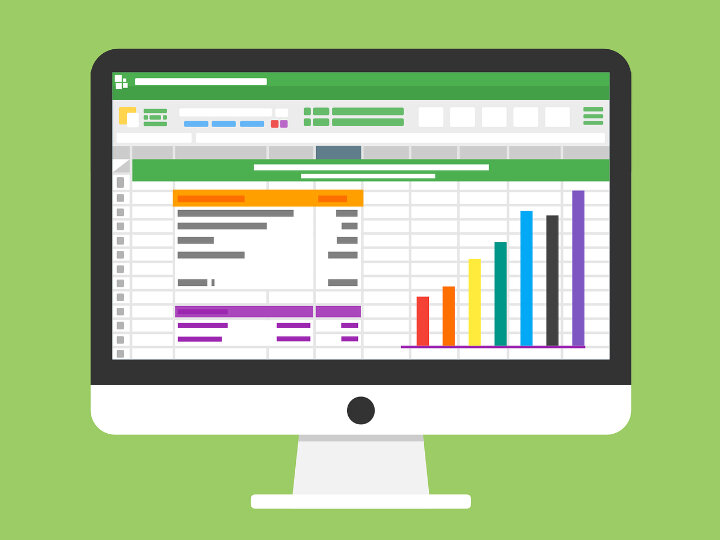Research says that the number of businesses investing in data-driven marketing is growing. This is not surprising at all, given that this practice can benefit your business in multiple ways. For example, it lets you create better customer experiences, builds personalized marketing strategies, generate relevant leads, and retain loyal customers.
Here are a few tips on what data pieces to collect and where to find them.
1. Collecting Basic Customer Data
When adapting your brand to your customers, you first need to get to know them. Modern customers focus on targeted buying experiences. They expect you to understand their needs, preferences, problems, and fears when marketing to them.
For example, if you’re a B2B business, you will need to seek the name of the contact employee, their position, as well as their contact information. Ask a few questions about the company, including its industry, the number of employees, its revenue, and so on. This kind of information allows you to build and cultivate more personal relationships with a customer, understand why a certain industry works (or doesn’t work) for you, and identify your key consumers in a broader marketplace.
When collecting the data about B2C customers, you should focus on their contact information and demographic data, such as their name, gender, age, location, household income, family status, profession, and so forth. This should be enough for you to create detailed buyer personas, understand your customers, and connect with them effectively.
2. How Likely Your Customers Are to Recommend your Brand
Your target audience doesn’t care about branded content. Instead, 93% of them say that online reviews impact their purchasing decisions. This is why it’s important to assess your current customers’ experiences with your brand and see whether they are willing to recommend your brand and products to their friends, colleagues, and families.
One of the most effective ways to answer this question is to conduct a Net Promoter Score survey. You ask customers to rate their likeliness to recommend your products on a 1-5 score. This is how you measure brand satisfaction, but also brand sentiment and customer loyalty. You can further classify your customers into three categories – detractors (dissatisfied customers), promoters (happy customers), and passives (indifferent customers). Calculating the NPS is easy – you need to subtract the percentage of detractors from the percentage of promoters.
3. Tracking Transactional Data
Monitoring transaction information provides you with insights about your customers’ shopping habits and preferences. The idea is to store customer’s transactional data and see what products are popular among your customers. Sure, in the era of sophisticated cybercrimes, when collecting and storing customer transaction data, always invest in secure information sharing. This type of information will tell you a lot about your popular products, how often people buy from you, how many items they buy, etc.
4. How Customers Find Out About You
This is one of the most critical questions, as it gives you valuable insights into your marketing and lead generation strategies. Namely, your goal is to analyze the effectiveness of your marketing efforts and understand which ones work for you the best. For example, if you notice that most of your customers come from social networks, especially Instagram, this means you should focus on building a stronger brand presence there. If, on the other hand, customers find you by reading other customers’ reviews, then it’s time to focus more on encouraging customer feedback across multiple channels.
5. Purchase Decision Data
When targeting your customers, you need to know what inspires them to make a purchase. Is its brand popularity and convenience? Maybe they are looking for online reviews, testimonials, and influencer insights. The majority of customers also prefer stable, user-centric brands that constantly provide large discounts, competitions, and giveaways. Knowing what tactics resonate with your audiences, you will be able to refine your strategy and ensure greater conversion rates and customer loyalty.
How to Collect Customer Data?
Now that you know what kind of data matters to your business, it’s time to start collecting it. Here are a few channels to use.
Website orders – when a customer makes a purchase for the first time, you should save their name and contact information. That’s how you will start building their transaction history and be able to track their journey and experiences over time.
Surveys are still a powerful way to learn more about your customers and collect fresh and honest feedback. Now, there are different forms of surveys, including open-ended surveys, customer satisfaction scores, customer effort scores, etc. You should also pick the right channel to distribute your survey, including email surveys, mobile app surveys, website surveys, SMS surveys, etc. Test different options and always choose the surveys and channels that work for your customers.
Run a competition – this is where social networks shine. Namely, you could start a massive giveaway. To enter the contest and win the prize, a customer needs to provide their contact information, tag a friend, or answer a question.
Social media monitoring – use social listening tools to track relevant customer discussions and measure brand awareness and sentiment.
Observe website behaviors – accessing this information will help you understand how many people landed on your site, where they clicked on, how much time they spent on a certain page, etc. In the era of GDPR, you should always inform a customer about the cookies you’re collecting and ask them whether they agree.
Over to You
Collecting customer data gives you the opportunity to learn more about your target audience and their expectations from your brand. Knowing who your customers are, you will be able to focus on the right marketing tactics and personalize your relationships with customers. This will not only help you attract new customers and boost sales but also allow you to retain loyal customers.
What customer data do you collect? We’d like to hear from you.












